You can also make an effective homemade disinfectant from a mixture of water and bleach, which you may already have on hand. It’s equally important to know how to use a disinfectant properly—that means allowing enough time for a disinfectant to do its job, which can be as much as 10 minutes. If you use a household cleaner that’s not among our picks and want to know whether it’s an effective coronavirus disinfectant, search for it on the EPA’s List N, the definitive and frequently updated resource.
Our pick
Clorox Disinfecting Wipes
Effective, EPA-approved, and (usually) easy to find, these presoaked wipes need only four minutes of contact time to neutralize the coronavirus.
Buying Options
*At the time of publishing, the price was $5.
Clorox Disinfecting Wipes, like the other picks in this guide, are not necessarily better than the other options; our advice is to get any of our picks that you can find, first of all. In non-pandemic times, Clorox’s bleach-free wipes are usually sold in single canisters or in four-packs at a range of retailers. These wipes can eliminate the coronavirus on hard surfaces in your home—countertops, bathroom fixtures, doorknobs, light switches, and tile and some wood floors—but not on fabric and other soft materials.
Our pick

Lysol Disinfecting Wipes
Another widely sold wipe, these are EPA-approved too, but they take 10 minutes to disinfect.
Buying Options
*At the time of publishing, the price was $10.
Lysol Disinfecting Wipes are also EPA-approved to disinfect hard surfaces, and are also (usually) widely available, either in a single canister or a six-pack. They employ the same non-bleach disinfectant as the Clorox wipes but take longer to work: 10 minutes versus four. That means more waiting around while they work, but if you find them, get them.
Our pick
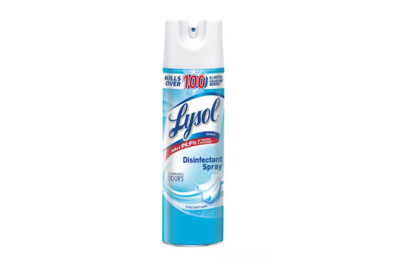
Lysol Disinfectant Spray
This non-bleach aerosol spray works in 10 minutes. It’s fabric-safe but guaranteed to eliminate the virus only on hard surfaces.
Lysol Disinfectant Spray uses quaternary ammonium (quats) instead of bleach. It’s safe on hard surfaces and most fabrics, and it’s gentler on skin than bleach and produces fewer harsh fumes. It eliminates the coronavirus in 10 minutes on hard surfaces but only sanitizes (kills most but not all pathogens) on soft surfaces. Look for it also sold as a two-pack or three-pack.
Our pick
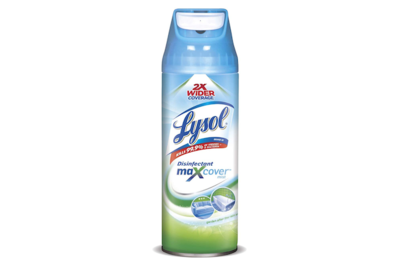
Lysol Disinfectant Max Cover Mist
This aerosol also works in 10 minutes and is fabric-safe, but again, it’s guaranteed to eliminate the virus only on hard surfaces.
Like the similar Lysol Disinfecting Spray, Lysol Max Cover Mist is quats based and safe on both hard surfaces and fabrics, but is guaranteed to eliminate the coronavirus only on hard surfaces, taking 10 minutes to do the job.
Our pick
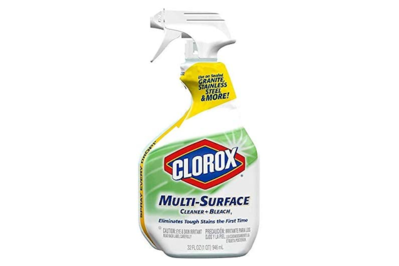
Clorox Multi-Surface Cleaner + Bleach
This bleach-based cleaner works in one minute but will damage fabrics, and the fumes are harsh.
Buying Options
*At the time of publishing, the price was $4.
Clorox Multi-Surface Cleaner + Bleach eliminates the coronavirus in one minute on hard surfaces, such as you find in kitchens and bathrooms—sinks, faucets, toilets, tile, and synthetic countertops. Any bleach-based spray like this is for use only on hard surfaces. It will damage fabrics, feel harsh on skin, and produce fumes that can irritate mucous membranes. Take basic precautions such as ventilating the room and wearing gloves.
Our pick

Clorox Clean-Up Cleaner + Bleach
Another bleach-based cleaner from Clorox, this one works in five minutes, and its fumes are also strong.
Buying Options
*At the time of publishing, the price was $3.
This bleach-based spray eliminates the coronavirus in five minutes on hard surfaces and is for use on bathroom and kitchen surfaces. No fabrics. Wear gloves. Ventilate the room.
Our pick
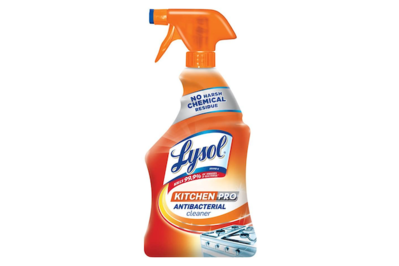
Lysol Kitchen Pro Antibacterial Cleaner
This spray is based on a non-bleach disinfectant, so it’s safe on fabrics but guaranteed to eliminate the coronavirus only on hard surfaces.
Buying Options
*At the time of publishing, the price was $3.
Unlike the other spray-bottle options on our list, this one is fabric-safe because it uses quaternary ammonium (“quats”) instead of bleach. It eliminates the coronavirus in two minutes on hard surfaces, whereas on soft materials it may sanitize—that is, kill most viruses and other pathogens present—but is not guaranteed to fully disinfect. It’s less harsh on the skin and produces less-noxious fumes than bleach-based products.
Our pick
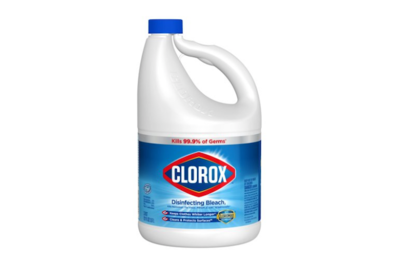
Clorox Bleach (121 ounces)
Diluted in water, bleach is the key ingredient to a homemade disinfectant that’s as effective as it is noxious. Research how to safely handle and work with bleach if you’re new to this.
Buying Options
*At the time of publishing, the price was $4.
Like you, we couldn’t find many of these ready-to-use products for sale online in 2020. But one thing has been consistently available: Bleach. Clorox recommends a half cup of bleach per gallon of water to make a disinfectant solution; we’ve found the CDC recommending a more diluted version, and other experts use a more concentrated mix. Before you concoct any bleach-based disinfectants, please learn how to do it safely and effectively. Start with our section on how to make a homemade disinfectant for coronavirus.
[ad_2]
Originally Appeared Here